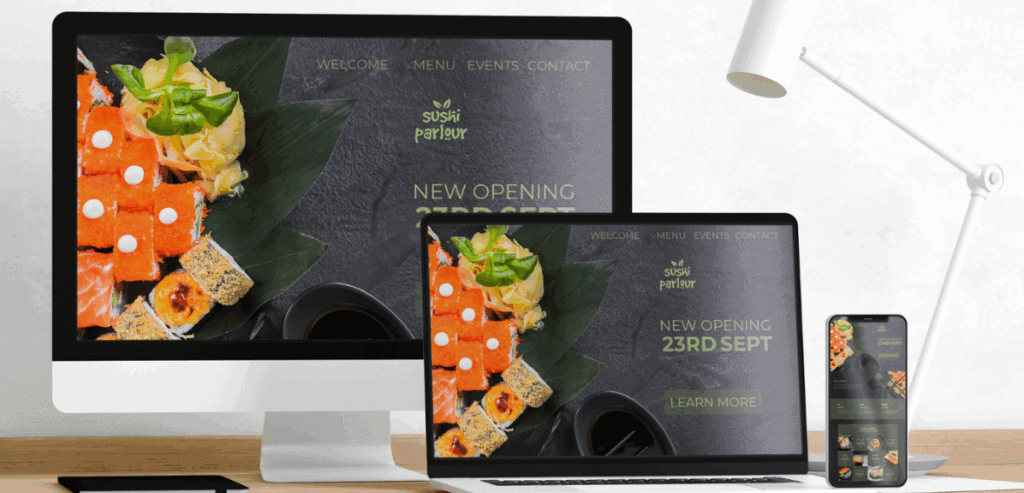Twitter, now known as X, has become something greater than a social site — it’s an important part of your online marketing and search engine optimization strategy. With millions of active users each day, Twitter provides specific options to increase your online presence both on the platform and through search engines such as Google.
But being noticed within such a quick-moving space takes more than regular tweeting. This is where Twitter SEO enters — the skill of optimising your account, tweets, and interactions to achieve maximum discoverability. In this article, we delve into how Twitter drives SEO, the variables that dictate visibility, and clever tips to make your brand heard online.
What Is Twitter SEO?

Twitter — now renamed X — is so much more than a spot to broadcast brief posts. With hundreds of millions of users participating actively every month, it’s a great place to develop relationships, expand your brand, and boost your influence. But how do you ensure your messages get noticed in such a busy environment? That’s where Twitter SEO enters the picture.
Twitter SEO (Search Engine Optimization) is the act of optimizing your profile and tweets so that they are more easily seen — both on Twitter itself and in outside search engines like Google. It’s about ensuring that your content appears when people are looking for topics, keywords, or even your name.
Whether brand, creator, or business, being optimized for Twitter SEO benefits you by allowing you to reach a broader, targeted audience through discoverability in search results.
Does Twitter Affect SEO?

If you’ve ever questioned whether actively using Twitter can actually make your website perform better in search results, the short answer is — yes, it can!. Although social media signals are not a Google ranking factor per se, tweets can be displayed in search results — particularly when they’re optimized with the proper keywords and hashtags. We’ve watched brands create solid Twitter profiles and, after some time, have their tweets pop up on Google’s first page.
An active, healthy Twitter presence also makes your brand more visible. Indeed, even your Twitter profile can appear in search results, sometimes frequently appearing directly next to your website. That provides the user with yet another chance to interact with your content and discover more about your brand. Therefore, an engaging Twitter stream could very well be the key to getting that first click — and gaining the trust of your users.
Factors That Influence Twitter SEO

Twitter’s feed isn’t random — it’s shaped by an algorithm that looks at several factors to decide what content you’re most likely to see and engage with. If you’re aiming to increase visibility — both on the platform and potentially in Google search — understanding these signals is key.
Here’s a breakdown of what really matters:
Timing is Everything (Recency)
Tweets are most accessible in the first few hours of posting. If you are looking to reach people in real time, post when your Twitter followers are most active. For old content or discussion topics, you can always search using the “Explore” tab with keywords to access tweets that are not so current but still pertinent.
Relevance to the User
Twitter attempts to present users with tweets that genuinely align with their interests. If someone actively engages with content regarding tech, for example, they’re more likely to see tweets pertaining to that sector — even if they don’t follow those accounts.
Engagement Signals
Tweets that receive a lot of engagement — likes, retweets, replies — will more likely show up on other people’s feeds. The reasoning is straightforward: the more engagement, the better the material must be. Twitter catches on and hype those tweets up.
Hashtag Use
Hashtags aren’t dead yet. They assist in organizing your tweets and bring them to users browsing through or following those terms. Don’t go crazy with them, though — one or two pertinent hashtags per tweet is more than enough to enhance visibility without obscuring your message.
Your Account’s Reputation
Older accounts that post consistently and have a track record of solid engagement tend to perform better in rankings. It’s Twitter’s way of rewarding credibility. So if you’re serious about visibility, invest in building trust over time.
Prior Interactions Matter
If a user has interacted with your handle in the past, Twitter keeps that in mind. Tweets from your handle are more likely to appear in their timeline later on. It’s a gentle reminder to continue conversations.
Visuals Give You an Edge
Tweets that contain images, GIFs, or videos tend to get more attention. They not only have greater visibility, but they can also receive better placement in feeds. If your link previews are correctly configured with Twitter Cards, you might even see more reach.
Language Compatibility
Twitter also prioritizes tweets in the same language as a user normally reads. It’s another method the platform attempts to make the content still relevant and easy to read.
Smart Tips To Effectively Use Twitter SEO

Select a Clear and Recognizable Username
Your Twitter username is usually the first thing users notice — and it should leave a lasting impression. Consider it similar to your digital signature. A short and easy-to-spell username that is also clearly associated with your name or brand, facilitates users to easily find and tag you, as well as recall you.
Don’t overcrowd it with unwanted symbols or numbers. Rather, choose one that is consistent with your identity across platforms. Whether you are using Twitter for business, content creator, or thought leader, your handle should not confuse but support your web presence.
Optimize Your Bio (Meta Description)
Your bio isn’t an “about me” page — it’s precious place that can influence how people and search engines see you. With only 160 characters, make each word count. Be concise on what you do or what followers will get from your tweets.
Adding related keywords naturally makes you more searchable using Twitter’s internal search. Whether you prefer a professional voice or something lighter and more personal, ensure that it is consistent with your tweet voice so that everything seems to go together.
Include Keywords in Your Tweets
Tweets are searchable — so employing keywords within them is not merely option but a strategy. Use keywords as pointers that lead users to your content. The trick is to utilize them organically in your tweets, not simply include them for the sake of it.
Take the time to find out what your audience is truly looking for, and then incorporate those words into your tweet. For example, a location-independent worker may use hashtags such as “remote work tips” or “freelance lifestyle” to join popular discussions and increase findability.
Be Clever with Hashtags
Hashtags aren’t just a cool bells and whistles for announcing your content— they ensure your tweets land in the conversations that matter. A good hashtag can introduce your content to brand new eyes. But it’s not quantity, it’s quality.
Don’t load up your tweet with tags; select one or two that are really appropriate to your subject. Combine popular tags with lesser-used ones to get a mix of visibility and community interaction. If you’re building a brand, consider crafting your own unique hashtag to tie your campaigns together.
Reuse Your Best-Performing Tweets
If a tweet gets great engagement, don’t let it fade into the feed — give it more life. Popular tweets are proof of what resonates with your audience, so reuse them strategically.
You can retweet them with commentary, pin them to your profile for repeated visibility, or reference them back in fresh threads. Treat top-performing tweets as evergreen content — if it worked before, then there’s a good chance it’ll work again under the right timing and context.
Add Multimedia for Impact
Visual content gets attention. Photos, GIFs, or videos in a tweet are likely to receive more likes, shares, and comments — that’s the way we consume information. Including images in your tweets doesn’t simply get attention; it also enables users to grasp and relate to your message better.
Utilize quality and appropriate media that enhances the tweet. A combination of visuals — from images and infographics to brief videos — can keep your timeline looking new and your viewers engaged.
Utilize Alt Text for Improved Accessibility and SEO
Including alt text on your images accomplishes two great things: it makes your content accessible to visually impaired users, and it provides search engines with more context to interpret and index your content. Keep your alt descriptions short, concise, and full of keywords — but don’t overdo it.
A good alt text says what’s in the picture and why it’s important. For instance, if you post a photo of a peaceful mountain lake, write it so that it describes a picture and includes relevant words, such as “Sunrise view over peaceful mountain lake, ideal for weekend nature getaways.”
Engage Through Interacting

Twitter is not just about blindly posting content— it’s a two-way conversation. It’s not just about getting retweets and likes; it’s about initiating conversations and establishing relationships. The more you engage, the more Twitter will love you.
Make sure you are taking the time to comment on post, retweet other people in your niche, and like posts of interest to you. Asking good questions or requesting opinions is an excellent means of initiating discussion and engaging more people. The more responsive and participatory you are, the larger your presence organically becomes.
Conclusion
Twitter SEO is not a social media strategy — it’s a smart action to leverage your online presence. Through optimizing your profile, targeted keywords, hashtag use, and audience engagement, you are making your content more visible both to Twitter and in search engine results.
While Twitter alone will not be a direct driver for Google rankings, it will have a strong influence on creating your digital brand footprint, driving traffic, and building credibility. In today’s world where everything is interconnected, SEO integration with social media is no longer a choice — it is necessary. Mastering Twitter SEO means positioning your brand where conversations happen and where visibility matters most.
FAQs
1.Does Twitter activity directly impact Google rankings?
Not directly, but optimized tweets can appear in search results, boosting your online visibility.
2.How can I make my tweets more discoverable?
Use relevant keywords, hashtags, and visuals to increase engagement and searchability.
3.Can my Twitter profile rank on Google?
Yes, an active and well-optimized profile tends to show up in search engine results along with your site.
4.How often do I tweet for improved SEO?
Consistency is the key here — daily posting or regular posting at peak engagement times.
5.Do hashtags remain relevant in Twitter SEO?
Absolutely. Well-thought-out, relevant hashtags make your content discoverable by targeted audiences and trends.












